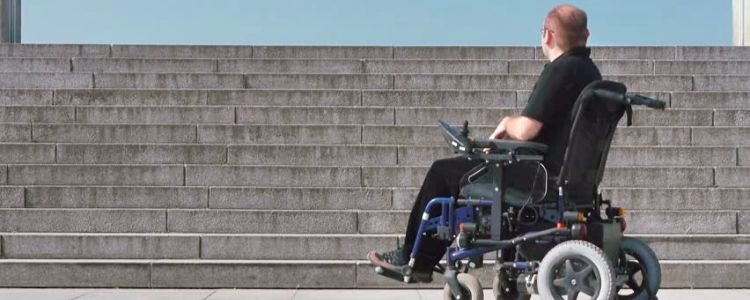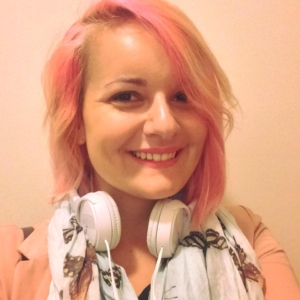How the Media is Failing the Disabled Community
Note: this piece uses identity-first language (autistic, disabled, etc.) based on the preferences of many of our community members.
When I started watching Atypical, I was hopeful. Finally, there was a show purportedly centered on Sam, an autistic teen. Sure, Sam is the white, intelligent, relatively affluent, and male autistic person we’re all used to seeing. I was prepared for that. What saddened me was the realization that Sam’s character embodies many autistic stereotypes and further stigmatizes autism.
Much like the “sassy gay friend” trope (a snarky young man whose only purpose is to snap and sashay at everything), Sam hasn’t been fleshed out beyond the stereotypes. Meanwhile, characters like Sam’s sister and mother are given layered, complex storylines and are allowed to develop as characters.
And in this summer’s smash-hit film, Wonder Woman, Doctor Poison, whose scarred face was covered throughout the film, was undeniably bitter and terrifyingly evil—standing in stark contrast to the physically agile and attractive Diana Prince.
In extreme cases like in Me Before You, disabled lives are depicted as not worth living at all. As the film soared to popularity, many disabled people decried the film for its portrayal of Will, a quadriplegic man who chooses to end his own life.
Moreover, these television shows and films are largely written by, directed by, and star non-disabled people. Last year, Variety reported that 95% of disabled characters in the nation’s top 10 television shows are portrayed by able-bodied actors. For the most part, though, disabled representations are almost nonexistent. According to a 2011 survey, scripted disabled characters represent less than 1 percent of all regular characters on primetime network television shows.
In other forms of media like news shows and online articles, disabled people are props or feel-good stories who only make the news for getting asked to prom or being “allowed” to win a basketball game. Disabled people are portrayed as objects to be pitied, rather than subjects with meaningful lives and stories to share.
There are consequences for relying on stereotypes, and those consequences hurt. Even in 2017, many autistic women go undiagnosed and unsupported due, in part, to inaccurate media representations of autism that some doctors still buy into. In general, the disabled community is routinely treated in patronizing, condescending, and belittling ways by those around them. There have even been incidents in which disabled people are photographed or touched without their consent.
Meanwhile, there is a stark difference between media which rely heavily on unflattering stereotypes and media put out by the disabled community. For example, All the Weight of Our Dreams, which was written and edited by autistic people of color, features submissions from dozens of autistic writers and artists who have struggles, hopes, dreams, and important stories to share. And #DisabledAndCute, a viral hashtag started by activist Keah Brown, shows disabled people feeling confident in their bodies on their own terms.
It’s nohttps://www.www.nationaleatingdisorders.org/blog/interview-with-keah-brown-disabled-and-cute-hashtagt that the disabled community doesn’t have those stories, it’s that non-disabled people are speaking over those stories. Here are six steps you can start taking today to be a better ally to the disabled community:
Listen to disabled people. Don’t dismiss or belittle disabled people’s concerns about media depictions, no matter how popular these depictions appear to be.
Center the voices of disabled people, not parents or caregivers. Everyone has a story to share, but disabled voices are routinely marginalized or excluded altogether. If you work in the media, make a real effort to ask disabled people for their ideas and opinions, especially about disability-related topics. And if you see a story about disability that excludes disabled voices, call it out by writing a letter to the editor, tweeting at the publication, or leaving a comment on the piece itself.
Hire disabled people. Disabled people typically face high rates of unemployment. Much of this is due to ignorance: the mistaken notion that accommodations will be costly (most come at little to no cost) and that disabled people will not perform at the same levels as non-disabled people (also false). It’s time to stop subscribing to outdated and untrue ideas about disability.
Read and share the work of disabled people. Here are a few good places to start:
Ask, don’t assume. No two people are the same. Everyone has different strengths and needs—assuming otherwise is offensive and wrong.
Question your own thought processes and behaviors.
- Is my workplace fully accessible for everyone?
- Is our company’s website screenreader friendly?
- Do I assume that everyone enjoys large crowds, loud noises, and group activities?
- Have I excluded others due to my own perceptions of their behavior or appearance?
- Have I used or laughed at slurs about disabled people?
We may not be able to change the media overnight, but we can educate ourselves and alter our own behaviors. This Media Literacy Week, there’s no excuse not to.
Diana Denza is a 2011 Fordham University graduate and NEDA’s senior communications associate.





